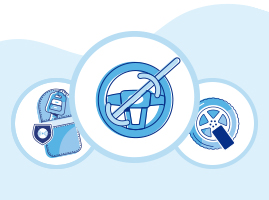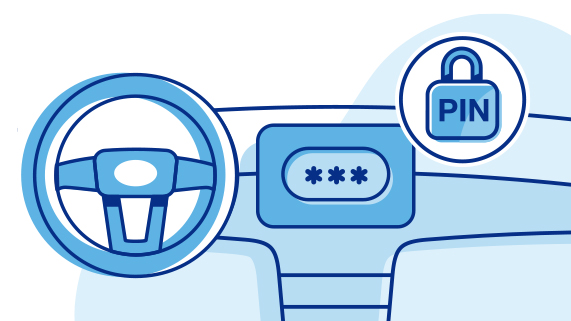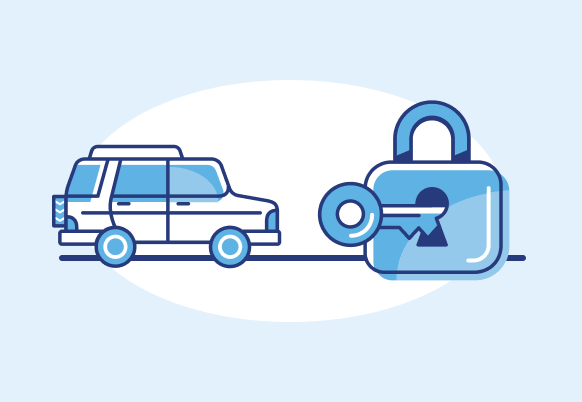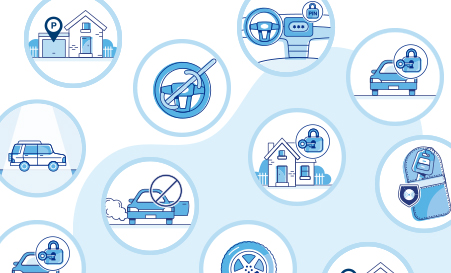
You can do your part in preventing auto theft.
To help mitigate the risk of vehicle theft, here are some recommended steps you can take:
Secure your parked vehicle with a steering-wheel lock, brake pedal lock, or wheel lock, such as “The Club” to secure your parked vehicle.
Secure your car key fob by storing it in a Faraday box or pouch to prevent signal hacking. This provides a barrier so radio signals cannot be sent/received from the key fob.
Consider a professionally installed after-market engine immobilizer.
Enable or install multi-factor authentication capabilities in your car.
Lock your doors (both car and home) and park your vehicle inside if you have a garage.
If you own more than one vehicle, it's recommended to park the less valuable one nearer to the street.
Install motion sensors and a camera on your driveway to capture any activity.
Cover the VIN (Vehicle Identification Number) so it's not visible on the dashboard.
Store a GPS tracker (ex, Air Tag) to track your vehicle should it be stolen.
Ensure items are out of sight, and do not leave valuables inside your vehicle.
When away from home, park in a well-lit area.
Always avoid leaving your vehicle unattended while it is running.
Installing retractable steel bollards in your driveway can be impossible to bypass when they are raised.
Report any suspicious activity to the police and avoid confrontations with thieves.
Theft-deterrent products can help you take back control.
With vehicles now being stolen at a rate of one every five minutes in Canada, the number of people experiencing the emotional impact of having their personal property violated continues to rise. In addition to taking the steps listed above, there are anti-theft devices you can have installed that can help make your vehicle more secure. For even more protection, see the options highlighted below.
Multi-Factor Authentication (MFA) system
Multi-factor authentication is a common process that consumers experience daily when using various digital platforms (financial services or retail apps, for example), and could add security against vehicle theft. The process is simple: The first factor is something the user has, like a key fob, while the second factor is something a user knows, such as a unique code that must be entered to start your vehicle. Some car manufacturers have already begun implementing multi-factor authentication to enhance vehicle security.


After-market engine immobilizer
As the name suggests, it is an extra device (not part of the vehicle’s Original Equipment Manufacturer) that offers additional security standards to prevent auto theft and can incorporate multi-factor authentication.
The process of authentication varies by product, but some common approaches are:
Authentication with a personal identification number (PIN) or a code sequence—A driver uses their vehicle’s key fob to start their vehicle like normal, then performs an additional step of using a unique PIN code or sequence of button presses on the dashboard console for the car to be operational. So, for example, if thieves intercepted the car’s key fob signal, they wouldn’t be able to get the car in motion without the correct PIN or code sequence. Without completing both steps, immobilizers would block the engine from functioning.
After-market engine immobilizers should be installed by a professional.
Because after-market engine immobilizers vary, research is key before having one installed.
Installing an after-market engine immobilizer is complicated and is not a do-it-yourself project. Attempting to install an engine immobilizer yourself could damage your vehicle’s wiring system, and lead to costly repairs. That’s why it is recommended that an immobilizer only be installed by a technician authorized by the product manufacturer since they provide a Certificate of Installation that validates it was correctly installed and registered.


